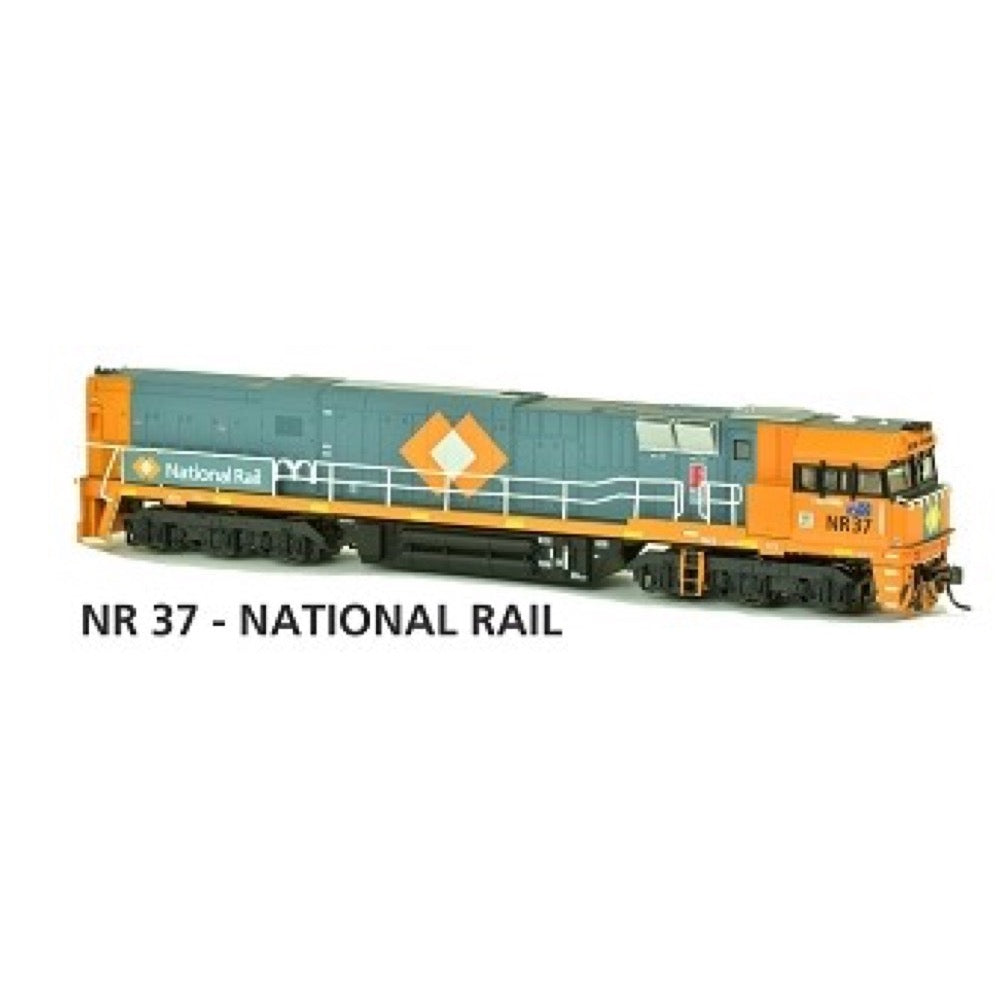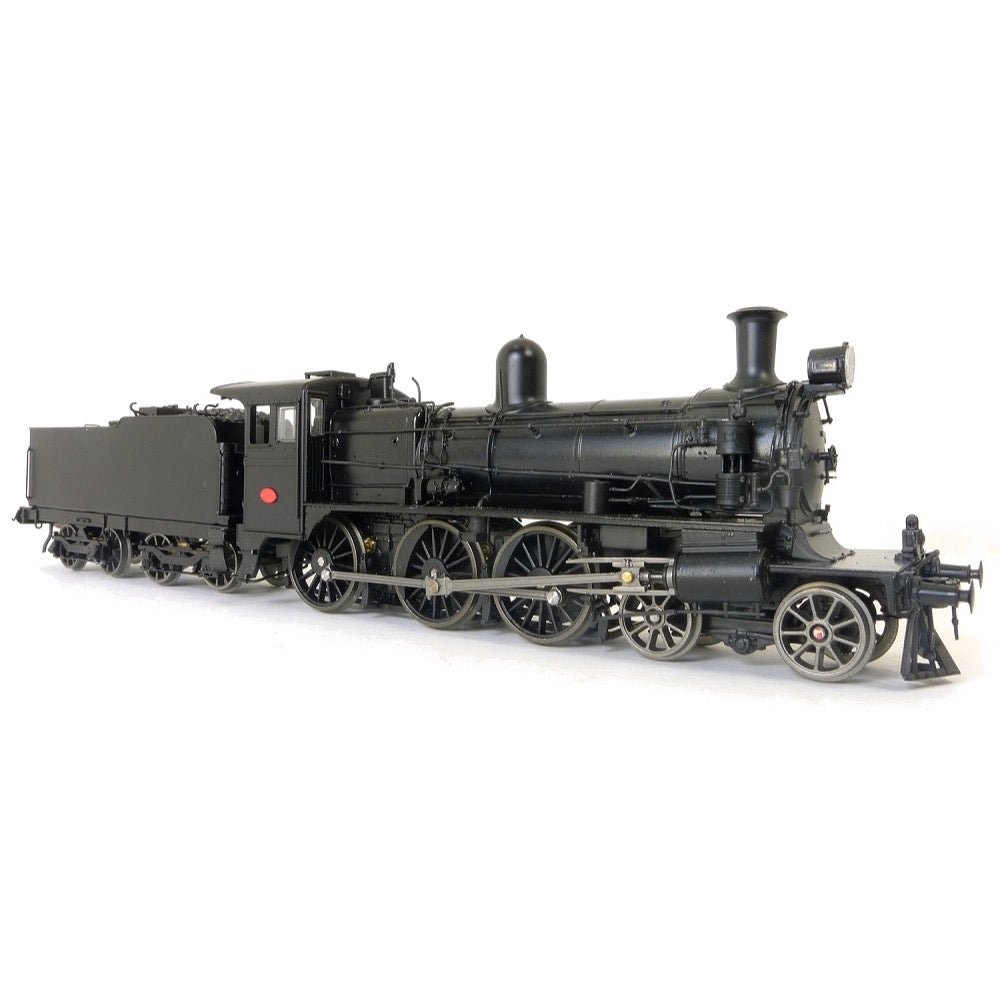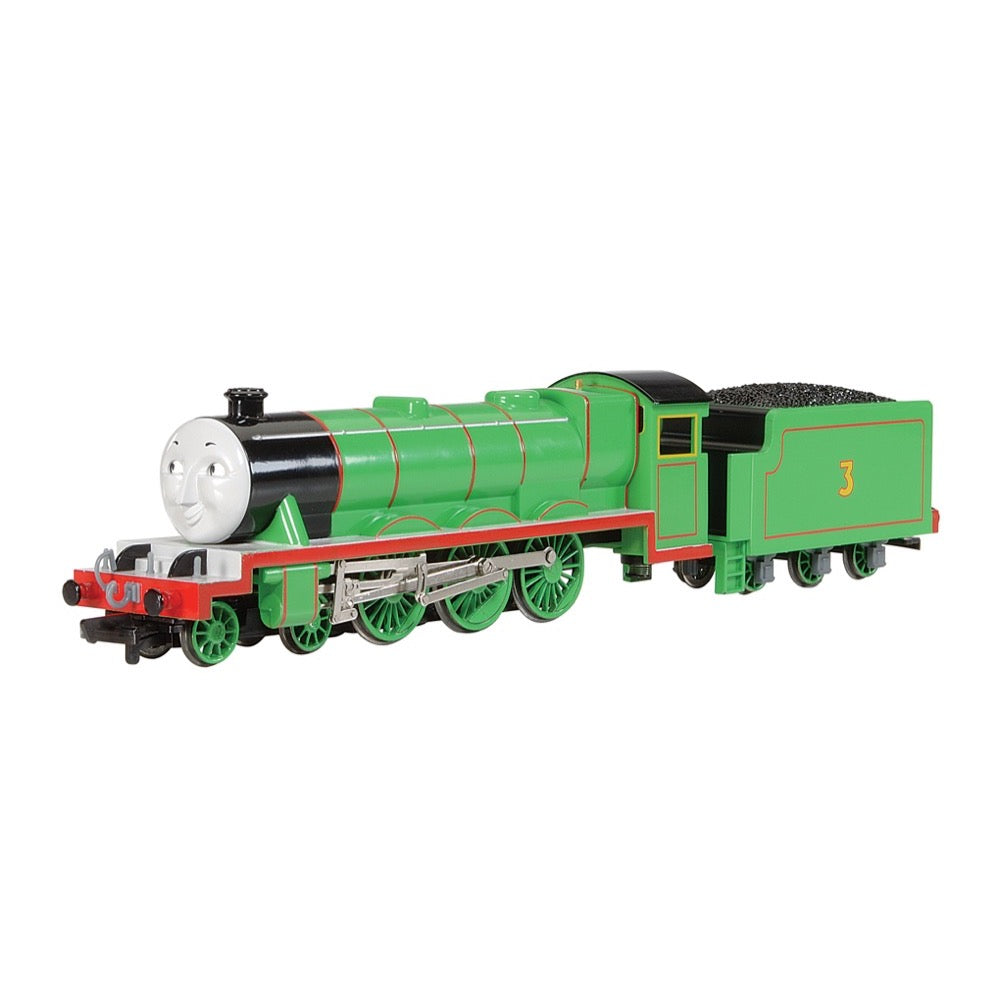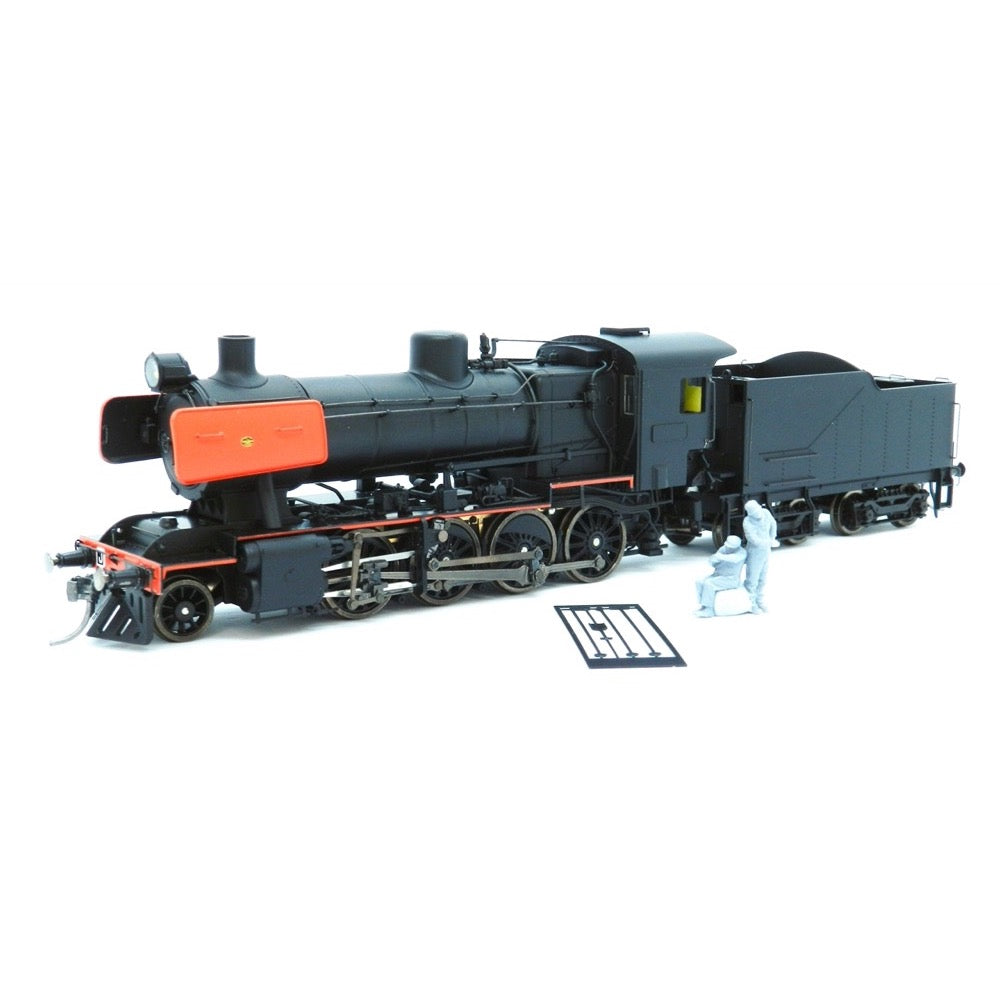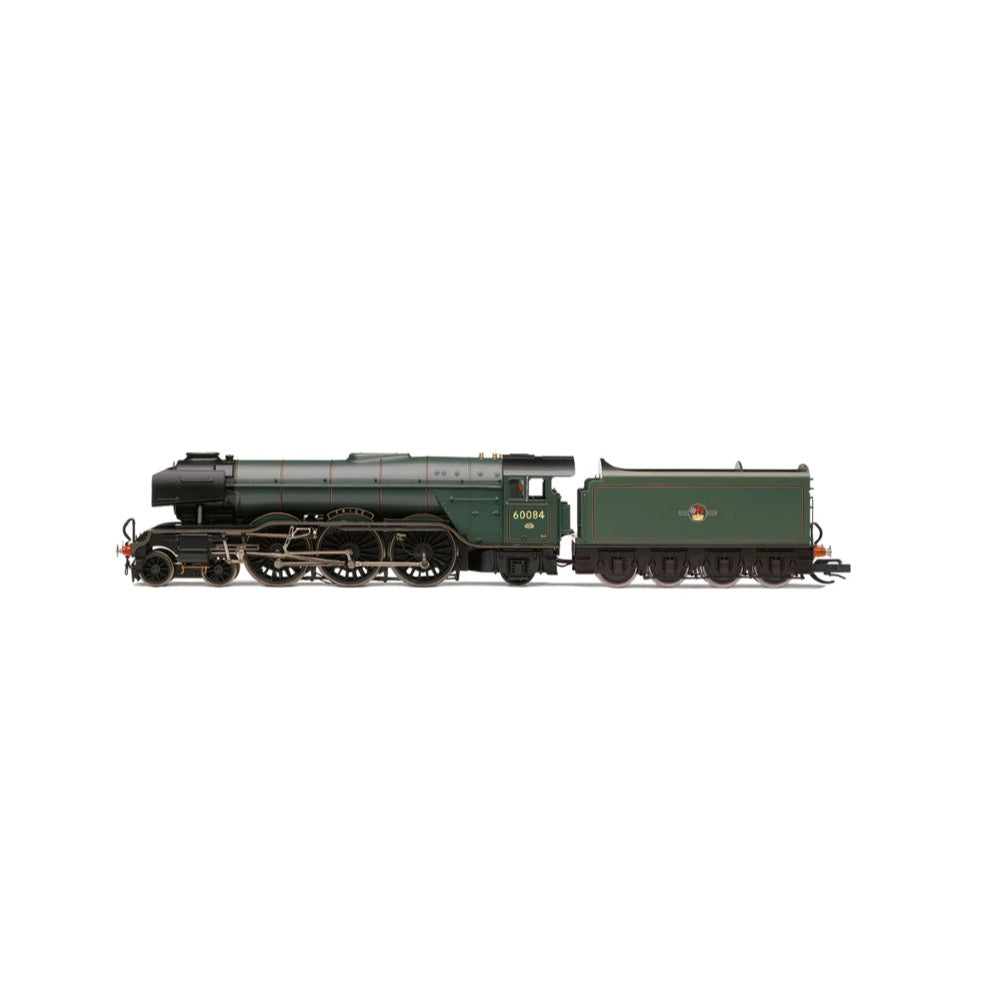
Hornby TT3006M TT BR Class A3 4-6-2 60084 Trigo Locomotive
119.00
$
<p>While the A1 was a fantastic locomotive that served its purpose as intended, it became clear reasonably quickly that some modifications could be made that would greatly improve its performance. These modifications however were too significant to avoid reclassifying the locomotives and as such the A1 Felstead 2743 was the first to be withdrawn from service only a handful of years after it was introduced, emerging from its shed in August 1928 as the first A3 ‘Super Pacific.’</p>
<p>The newly designated A3 locomotives had an improved boiler, larger cylinders and a conversion from right to left hand drive. 27 of the class were built as A3 locomotives from the get go, with all of the in service A1 examples being converted before 1950, the last such example to undergo this transformation was the then BR numbered 60068 Sir Visto.</p>
<p>2595 Trigo would enter LNER service in 1930, being one of the 27 A3 locomotives to never turn a wheel as an A1. The locomotive would go through the same short lived numbering pattern as its classmates carrying the number 84 for a short time before adopting its longer term BR number of 60084 on nationalisation. Along with all but one other member of the class, Trigo was unceremoniously scrapped in November 1964.</p>
<h3>Specification</h3>
<ul>
<li>Item Length - Without Packaging (cm): 19.1</li>
<li>Item Height - Without Packaging (cm): 3.7</li>
<li>Item Width - Without Packaging (cm): 2.5</li>
<li>Item Weight - Without Packaging: 0.15</li>
<li>Item Scale: 1:120 Scale</li>
<li>Finish: Painted</li>
<li>Colour: Green</li>
<li>Gauge: TT</li>
<li>DCC Status: Next 18 Socket (NEM 662)</li>
<li>Operator: BR</li>
<li>Designer: Sir Nigel Gresley</li>
<li>Wheel Configuration:4-6-2</li>
<li>Livery: BR Green</li>
<li>Minimum Curve (mm): Radius 2</li>
<li>Motor: 3 Pole</li>
<li>Number of Parts: 1</li>
<li>Class: Class A3</li>
</ul>
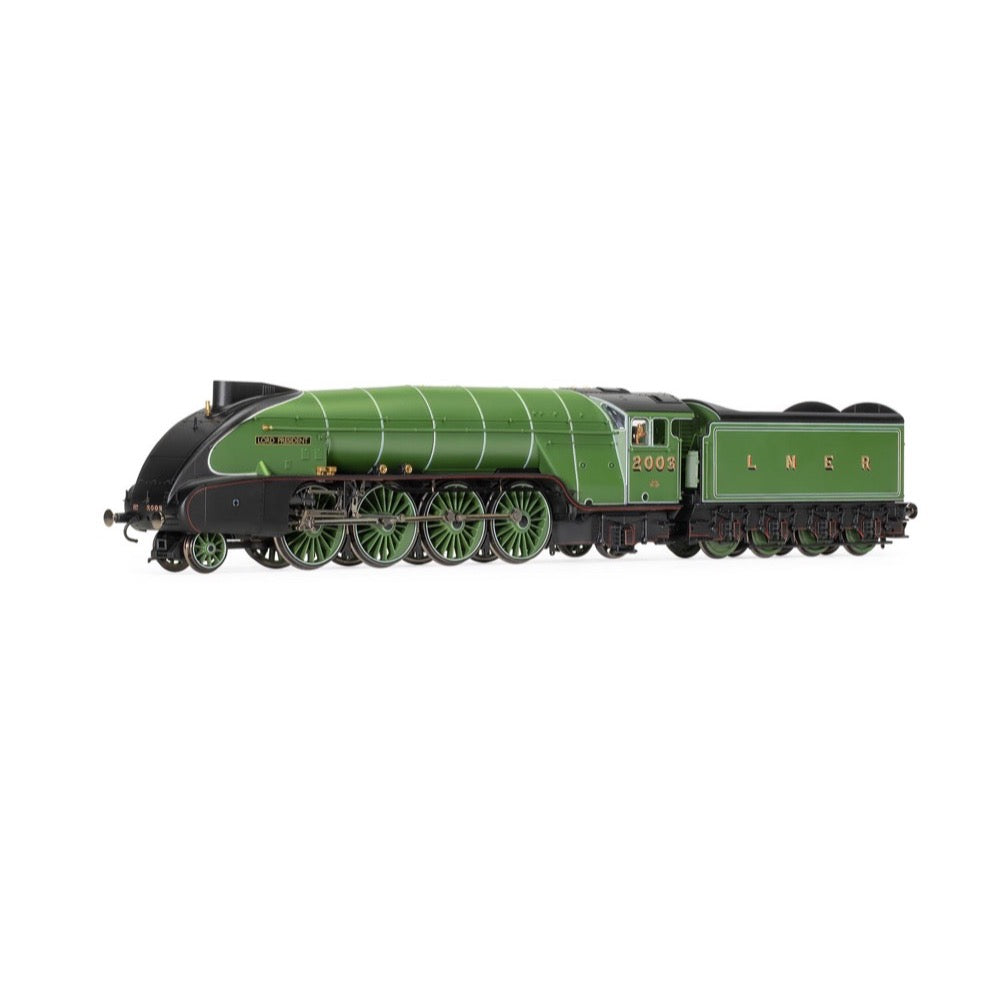
Hornby R3985 OO LNER P2 Class2-8-22003 Lord President
175.00
$
<p>The London and North Eastern Railway (LNER) Edinburgh to Aberdeen route had steep gradients and tight curves and the express passenger service was usually worked by a double header of two small engines. To overcome this situation, Nigel Gresley, Chief Mechanical Engineer (CME) of the LNER began designing a new locomotive at the LNER Doncaster Works in 1932.</p><p>The 2-8-2 configured locomotive was given the classification P2 and had four driving axles for greater adhesion, an A3 type boiler and a Kylchap type blastpipe/chimney system. A total of six of the Class were built. As the first two were returned to Doncaster for repairs they were fitted with streamlined fronts similar to the A4 Pacifics. The last four to be built were outshopped with streamlined fronts.</p><p>By 1944 the whole Class had been withdrawn. Unlike its predecessors, 2003 'Lord President' started life as a streamlined locomotive, borrowing from the design used on Gresley's A4 locomotives, although this streamlining only applied to the front of the locomotive and did not continue past the smokebox and cylinders in a bid to ease access for maintenance. The locomotive was allocated to the Haymarket Shed before being transferred to Dundee in September 1936 where it stayed until October 1942.</p><p>No. 2003 was the last P2 to be rebuilt as an A2/2. The engine entered the works in September 1944 and rebuilding was completed in December.</p><h3>Specifications</h3><ul>
<li>Item Length - Without Packaging (cm): 29.6</li>
<li>Item Height - Without Packaging (cm): 5</li>
<li>Item Width - Without Packaging (cm): 3.5</li>
<li>Item Weight - Without Packaging: 0.48</li>
<li>Item Scale: 1:76 Scale 00 Gauge</li>
<li>License: No</li>
<li>Finish: Painted</li>
<li>Colour: Green</li>
<li>Gauge: OO</li>
<li>DCC Status: DCC Ready 21 pin socket</li>
<li>Operator: LNER</li>
<li>Designer: Gresley</li>
<li>Wheel Configuration: 2-8-2</li>
<li>Livery: LNER Apple green</li>
<li>Minimum Curve (mm): Radius 2</li>
<li>Motor: 5 Pole Skew wound</li>
<li>Number of Parts: 1</li>
<li>Class: P2 Class</li>
</ul>
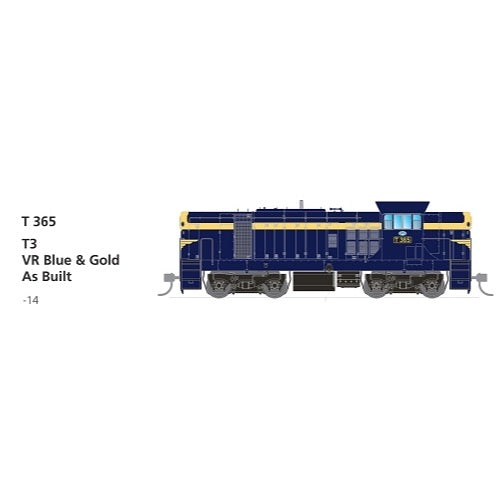
SDS Models HO T365 VR Blue & Gold T3 Series T Class Locomotive DCC Sound
173.00
$
<p>The Victorian Railways received their second series of T class locomotives from late 1959, these were mechanically similar to the first series but featured a new raised height operating cab layout. This new style of raised cab design featured throughout the remainder of the T class series.</p>
<p>SDS Models are pleased to offer the inclusion of the T-2 series within our range of Victorian Railways T class models.</p>
<p>Based upon the tried and proven Austrains T class mechanism we have comprehensively retooled almost every item, bringing the model inline with our exacting scale and design standards. Some 220 new or re-made parts are involved in the production of the four series we are offering below. All the models now feature prototypically correct width long hoods, series specific and appropriate fuel tank and battery box combinations, improved appearance bogie side frames and brake shoe / wheel tread alignment and a host of other design detail enhancements.</p>
<h3>Features</h3>
<ul>
<li>Highly detailed Ready-to-Run HO gauge model</li>
<li>Precisely tooled plastic body (ABS)</li>
<li>Genuine Kadee scale head whisker coupler</li>
<li>Separately applied handrails and detail parts</li>
<li>5-Pole skew wound electric motor and dual flywheels</li>
<li>All wheel drive and electrical pickup</li>
<li>LED head and marker lights</li>
<li>All models come standard with an MTC 21 pin motherboard</li>
<li>Exclusive and locally recorded EMD sounds by DCCSound</li>
</ul>
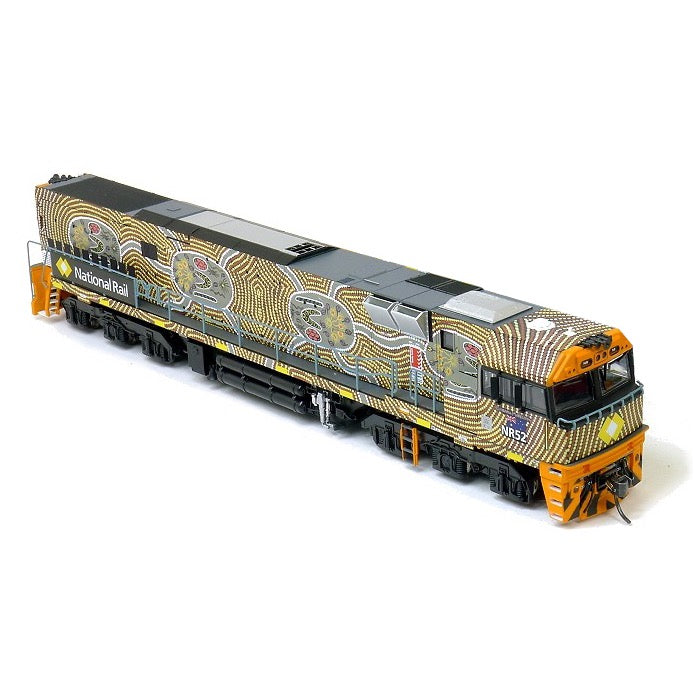
SDS Models HO NR52 National Rail Kungara Mankurpa Indigenous NR Class Locomotive DCC Sound
206.00
$
<p>In late 1997 National Rail Corporation out-shopped two NR class locomotives bearing indigenous design based on the work by Alice Springs artist Bessie Liddle.</p>
<p>The first was launched in Sydney by Cathy Freeman in November 1997, Warmi NR30, featuring an Aboriginal Dreaming story. Decorated by Bessie after a Warmi dot painting showing a snake, bush tucker and women‰۪s footprints.</p>
<p>The second was launched in Alice Springs by Mark Vaile in December 1997, Kungara Mankurpa NR52, this design depicts the Star Dreaming story Seven Sisters. Decorated by Bessie, a dot painting showing the travels of the Seven Sisters and their pursuit by the Snake Man in Pitjantjatjara country.</p>
<p>The production is limited to a total of 660 units across the 6 options and is fully licensed by the artists agency.</p>
<h3>Features</h3>
<ul>
<li>Highly detailed Ready-to-Run HO gauge model</li>
<li>Precisely tooled plastic body (ABS)</li>
<li>Genuine Kadee scale head whisker coupler</li>
<li>Separately applied handrails and detail parts</li>
<li>5-Pole skew wound electric motor and dual flywheels</li>
<li>All wheel drive and electrical pickup</li>
<li>LED headlights, marker lights, number boxes and ditch lights</li>
<li>All models come standard with an MTC 21 pin motherboard</li>
<li>Exclusive sound by DCCSound</li>
</ul>

Gopher Models N Scale C38 Class Locomotive NSWGR 3804 Streamliner (Black)
121.00
$
<p>Discover the unparalleled craftsmanship and intricate detail of the Gopher Models N Gauge NSW Class 38 Steam Locomotive, created in exclusive collaboration with Hobbies Australia. This meticulously engineered model train embodies the heritage and technological advancements of the iconic NSW Class 38, making it a must-have for any model railway enthusiast.</p>
<h3>38 Class: Engineering Marvel</h3>
<p>The C38 Class locomotive, built by Clyde Engineering, boasts impressive specifications that define its power and capability on the rails. With a wheel configuration of "Pacific" 4-6-2 and a driving wheel diameter of 5ft 9in, it exhibits remarkable traction and stability. Its substantial size, with a length of 76ft 5in and a total weight of 201 tons, ensures its presence is felt on the tracks. Equipped with a generous fuel capacity of 14 tons and a water capacity of 8,100 gallons, the C38 Class locomotive is ready for long-haul journeys. Its firebox area of 47 sq ft and boiler pressure of 245 psi enable efficient steam generation, while the cylinders, measuring 21.5in x 26in, deliver a formidable tractive effort of 36,273 lbf. The engineering marvel that is the C38 Class locomotive, embodies the legacy of Clyde Engineering and the rich history of railroading.</p>
<h3>Features</h3>
<ul>
<li>1/160 N Scale<br>
</li>
<li>DC Coreless Motor<br>
</li>
<li>DCC Sound Ready<br>
</li>
<li>Working Headlamp<br>
</li>
<li>Swivel Bogies on Tender<br>
</li>
<li>Accurately reproduced motion mechanism<br>
</li>
<li>Magne-MaticTM #1015 Couplers<br>
</li>
<li>Min track radius 10.5in</li>
</ul>
<!---->
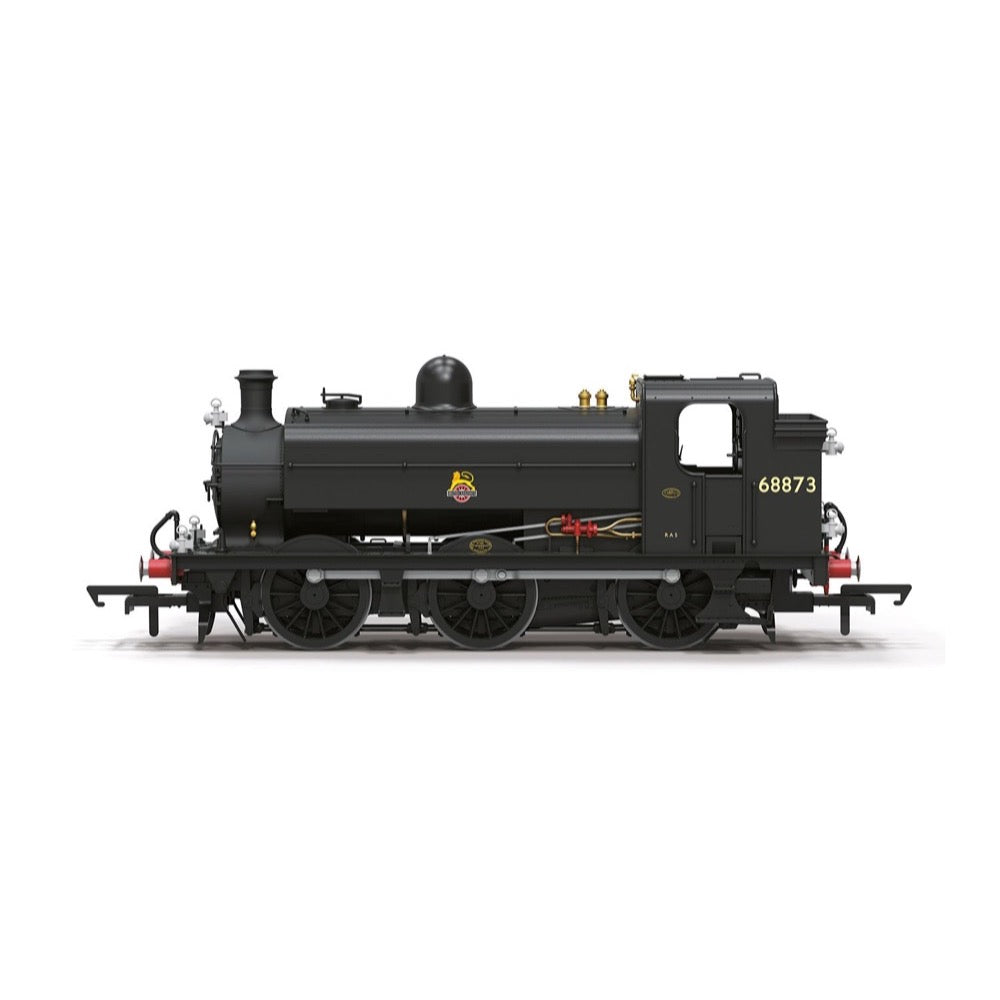
Hornby R30367 OO BR Early Class J52 68873
116.00
$
<p>No. 68873 was built in 1905 at Doncaster Works and entered service with the Great Northern Railway as its No. 1274, initially allocated locally at Doncaster goods yard. After becoming LNER No. 4274 in 1924, it was later renumbered as 8873 and made it into BR service in 1948 as No. 68873. It’s allocations also included King’s Cross, Hornsey and Colwick, before being condemned in September 1955.</p>
<p>The model is finished in plain black with BR early ‘cycling lion’ crest as applied in the 1950s, with the five-digit number on the increased-capacity bunker sides. The locomotive also has the later-type safety valves and steam injectors.</p>
<h3>Specifications</h3>
<ul>
<li>Item Length - Without Packaging (cm): 12.5</li>
<li>Item Height - Without Packaging (cm): 4.7</li>
<li>Item Width - Without Packaging (cm): 3.6</li>
<li>Item Weight - Without Packaging: 0.24</li>
<li>Item Scale: 1:76 Scale 00 Gauge</li>
<li>Finish: Painted</li>
<li>Colour: Black</li>
<li>Gauge: OO</li>
<li>DCC Status: DCC Ready 21 pin socket</li>
<li>Operator: BR</li>
<li>Designer: Henry Ivatt</li>
<li>Wheel Configuration: 0-6-0</li>
<li>Livery: BR Black</li>
<li>Minimum Curve (mm): Radius 2</li>
<li>Motor: 5 Pole Skew wound</li>
<li>Number of Parts: 1</li>
<li>Class: Class J52</li>
<li>Buffer Type: Metal Sprung Buffers</li>
<li>Coupling Type: NEM Couplings</li>
<li>Hornby Decode: Compatibility Primary</li>
<li>HM7000-21TXS: Bluetooth® & DCC Sound Decoder (21-pin)</li>
</ul>

Hornby TT3011TXSM BR Princess Coronation 4-6-2 46232 Duchess of Montrose Digital Locomotive Era 4
98.00
$
<p>The story of the Princess Coronation Class is one of split personalities and purposes. The original streamlined form of the class arose from tests on Stanier's development of the Princess Royal class locomotives. When the opportunity to produce five conventional versions of the Coronation Pacific as a comparison to the streamlined version arose, Stanier was quoted as saying, 'They can have their streamliners if they b***** want them, but we will also build them five proper ones' such was his lack of interest in a streamlined locomotive specifically.Those first five conventional locomotives were 6230 Duchess of Buccleuch to 6234 Duchess of Abercorn, colloquially known as Duchesses, after the first of this sub-class. Appearing in 1938 with a single chimney and without smoke deflectors, many purists regard these as the finest Pacific locomotives ever produced. The next four Duchesses to appear were 6249-6252 in 1944 and they emerged from works with a double chimney.Originally ordered as streamlined, the demands of maintaining the streamlined form exceeded the cost savings in coal and so they emerged from works without the casing, but with streamlined tenders (which had been completed before that decision was taken). In 1946 the next three Duchesses, 6253-6255, differed in appearance again, this time the curved fall plate at the front was replaced by a split platform and smoke deflectors were fitted.The process of de-streamlining the remaining engines began with 6235 City of Birmingham in April 1946, with 6243 City of Lancaster being the last in May 1949. Locomotives that had streamlining removed had a distinctive slant to the leading edge of the top of the smokebox, where this was previously hidden by the panels and designed to accommodate them. Eventually the raked smokeboxes were replaced with conventional smokeboxes, so that by late 1958 the majority of the fleet showed a similar appearance for the first time.Duchess of Montrose entered service in 1938 in the LMS’ well known Crimson Lake livery being numbered 6232. It would wear this livery and number for the entire time it would serve with the LMS before being adopted into BR as 46232 in 1947. Under BR Duchess of Montrose would wear three different liveries, before being scrapped in November of 1963 at Crewe.</p>
<h3>Specification</h3>
<ul>
<li>Item Length - Without Packaging (cm): 19.7</li>
<li>Item Height - Without Packaging (cm): 3.7</li>
<li>Item Width - Without Packaging (cm): 2.5</li>
<li>Item Weight - Without Packaging: 0.16</li>
<li>Item Scale: 1:120 Scale</li>
<li>Finish: Painted</li>
<li>Colour: Green</li>
<li>Gauge : TT</li>
<li>DCC Status: HM7000 Fitted - With Sound</li>
<li>Operator: British Railway</li>
<li>Designer:Sir William Stanier</li>
<li>Wheel Configuration: 4-6-2</li>
<li>Livery:BR Green</li>
<li>Minimum Curve (mm): Radius 2</li>
<li>Motor: 5 Pole Skew wound</li>
<li>Number of Parts: 1</li>
<li>Class: Princess Coronation Class</li>
</ul>
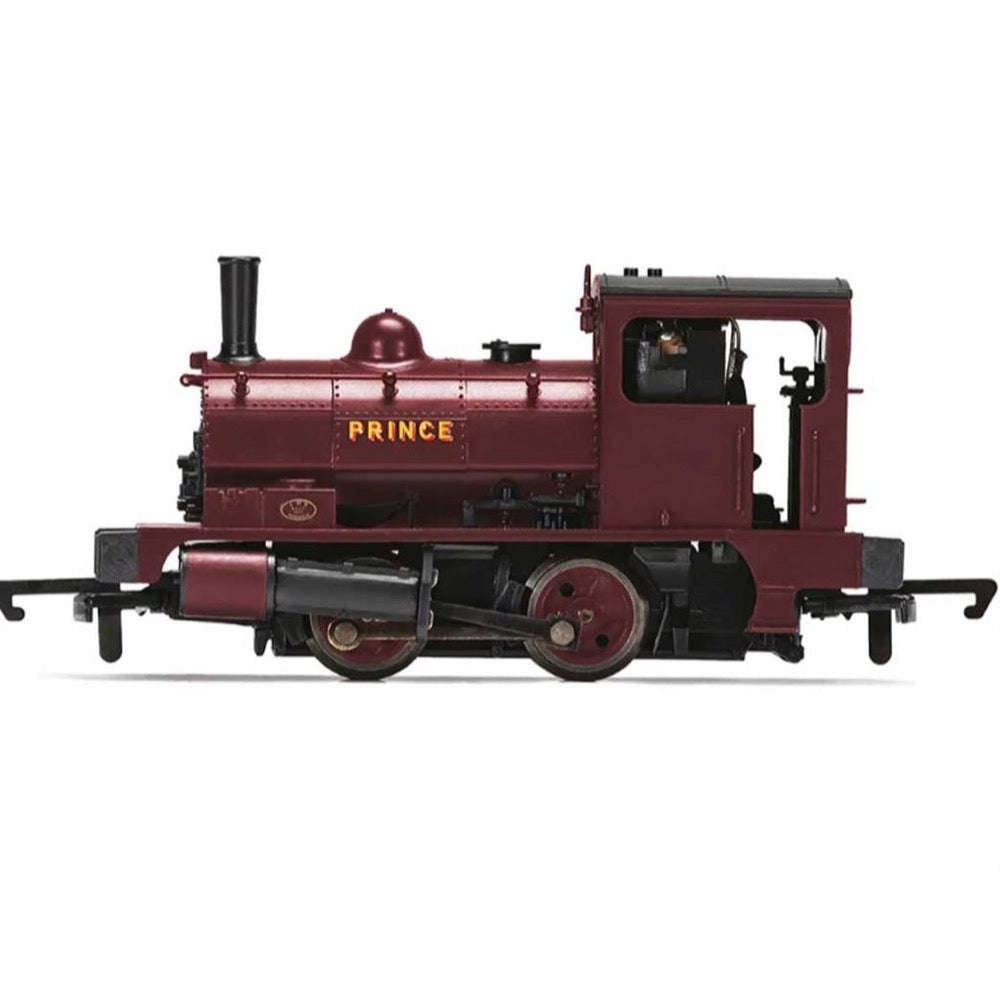
Hornby R30287 OO United Glass Bottle Manufacturing Ltd Pug 0-4-0 No. 19 Prince Era 3 Locomotive
71.00
$
<p>The diminutive Pug locomotive had its basis in the Pre-Grouping Lancashire and Yorkshire Railway, with the locomotives being built in batches by their designer John Aspinall, his successor Henry Hoy, and his successor George Hughes.</p><p>The locomotives were designed as shunters for the Northern Region. Their small wheels and wheelbase made them ideal to negotiate the tight trackwork that is often found around docks. When the Grouping Act came into effect the locomotives were given the somewhat taunting power classification of 0F, such was their size and the specificity of their use.</p><p>No. 19 was built in the 1910 batch, the last such batch of the class built. After its career with the L&YR and then LMS the locomotive was sold to the Mowlem and Co civil engineering company and then to the United Glass Bottle Manufacturers. Whilst the locomotive was in service for the United Glass Bottle Manufacturers, it was bestowed with the name ‘Prince’ and an attractive maroon livery.</p><p>The locomotive is now preserved. By mid-2022, ‘Prince’ was fully restored to an operational status. No. 19 sported a new LMS Black livery and was renumbered as 11243 in early 2023 to mark the centenary of the LMS as part of the ‘Big Four’ Grouping. It is now in service on the East Lancashire Railway and is owned by the Lancashire and Yorkshire Railway Trust.</p><p>Our model of this charming little locomotive has features somewhat restricted by its incredibly small size, a three-pole motor provides the power. Separately fitted details include whistles, a bell, and the boiler handrails.</p><h3>Specifications</h3><ul>
<li>Item Length - Without Packaging (cm): 10</li>
<li>Item Height - Without Packaging (cm): 4.5</li>
<li>Item Width - Without Packaging (cm): 3.5</li>
<li>Item Weight - Without Packaging: 0.15</li>
<li>Item Scale: 1:76 Scale 00 Gauge</li>
<li>Finish: Painted</li>
<li>Colour: Maroon</li>
<li>Gauge: OO</li>
<li>Operator: Private Owner</li>
<li>Designer: Sir John Aspinall</li>
<li>Wheel Configuration: 0-4-0</li>
<li>Livery: Private Owner</li>
<li>Minimum Curve (mm): Radius 1</li>
<li>Motor: 3 Pole</li>
<li>Number of Parts: 1</li>
<li>Buffer Type: Moulded Dumb Buffers</li>
<li>Coupling Type: Fixed Tension Lock</li>
</ul>


